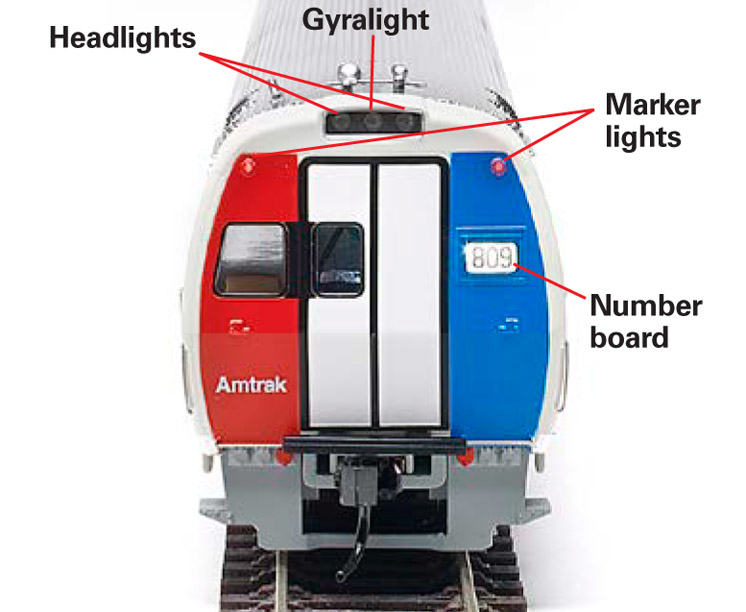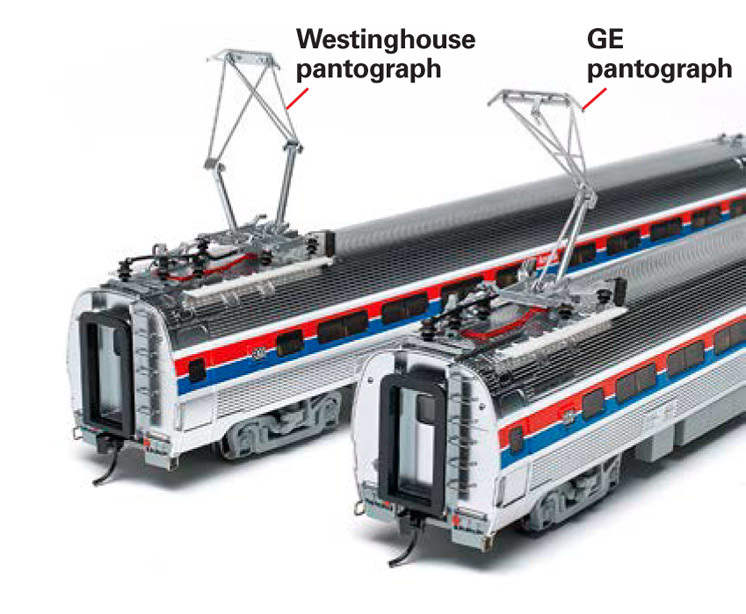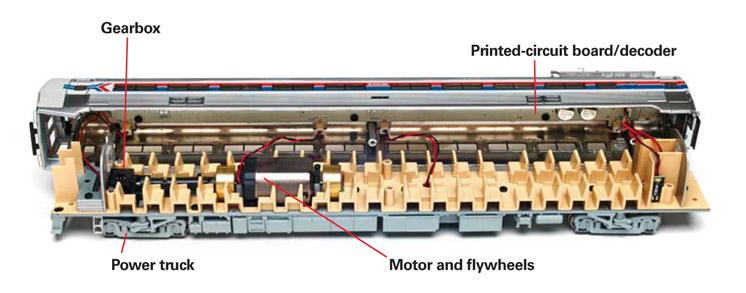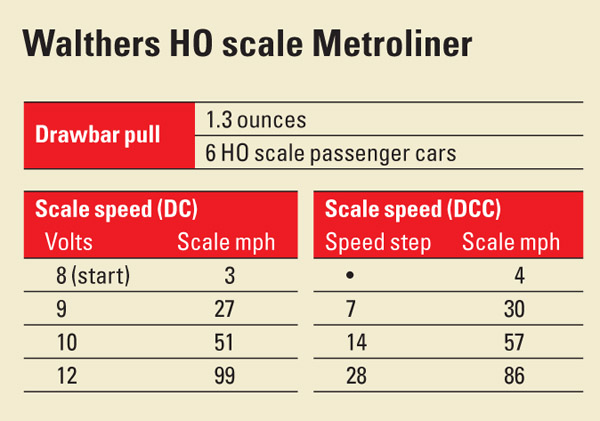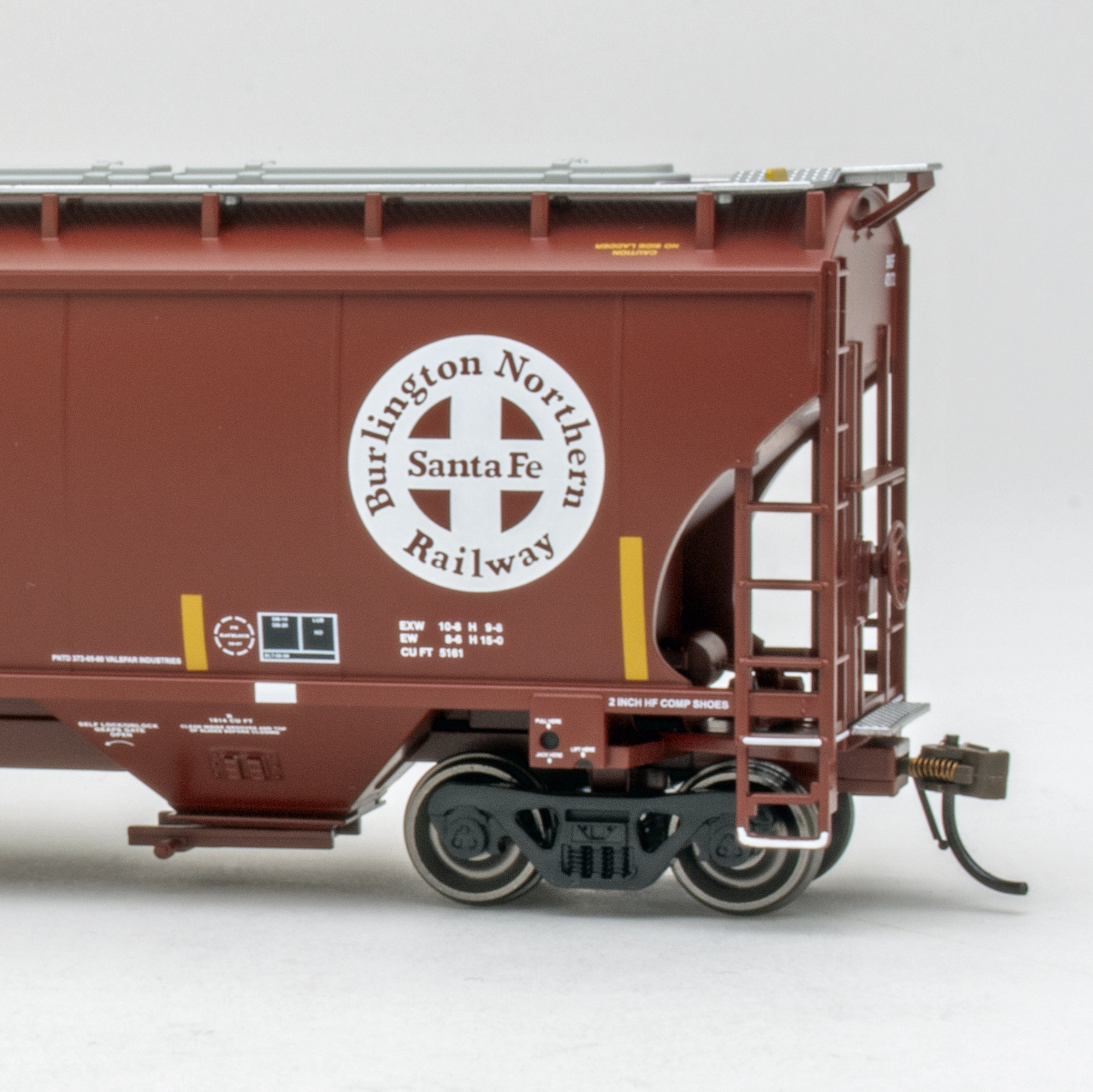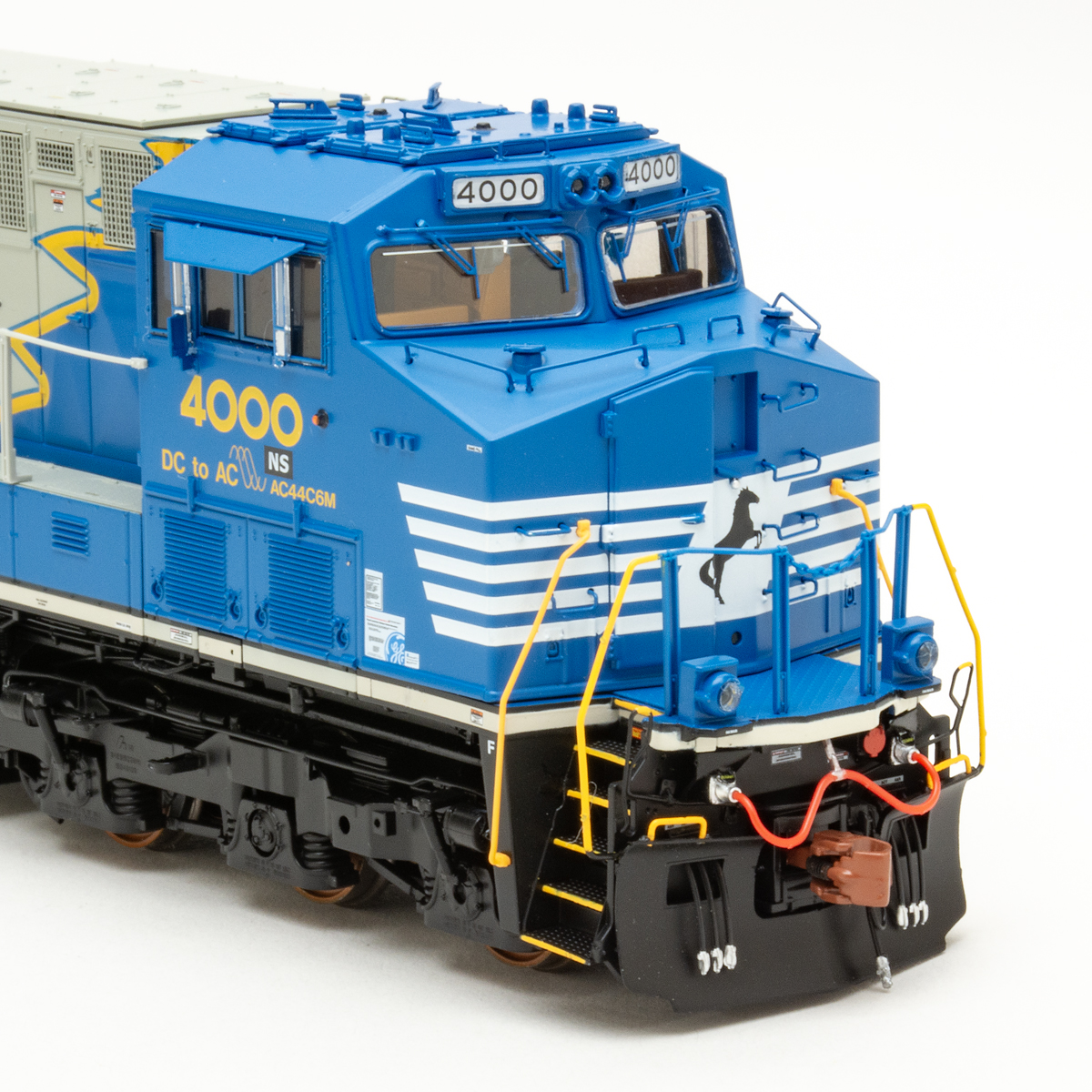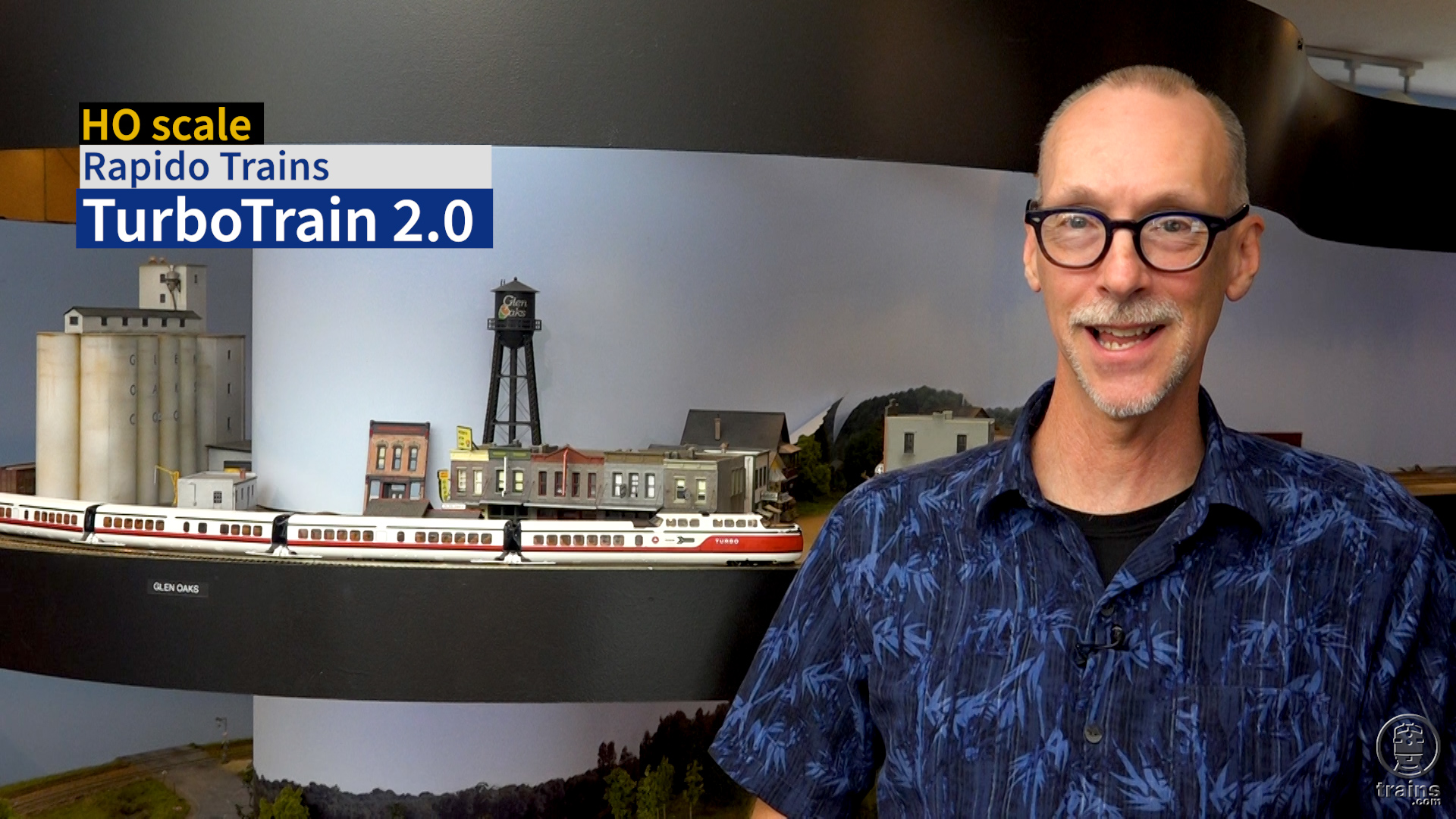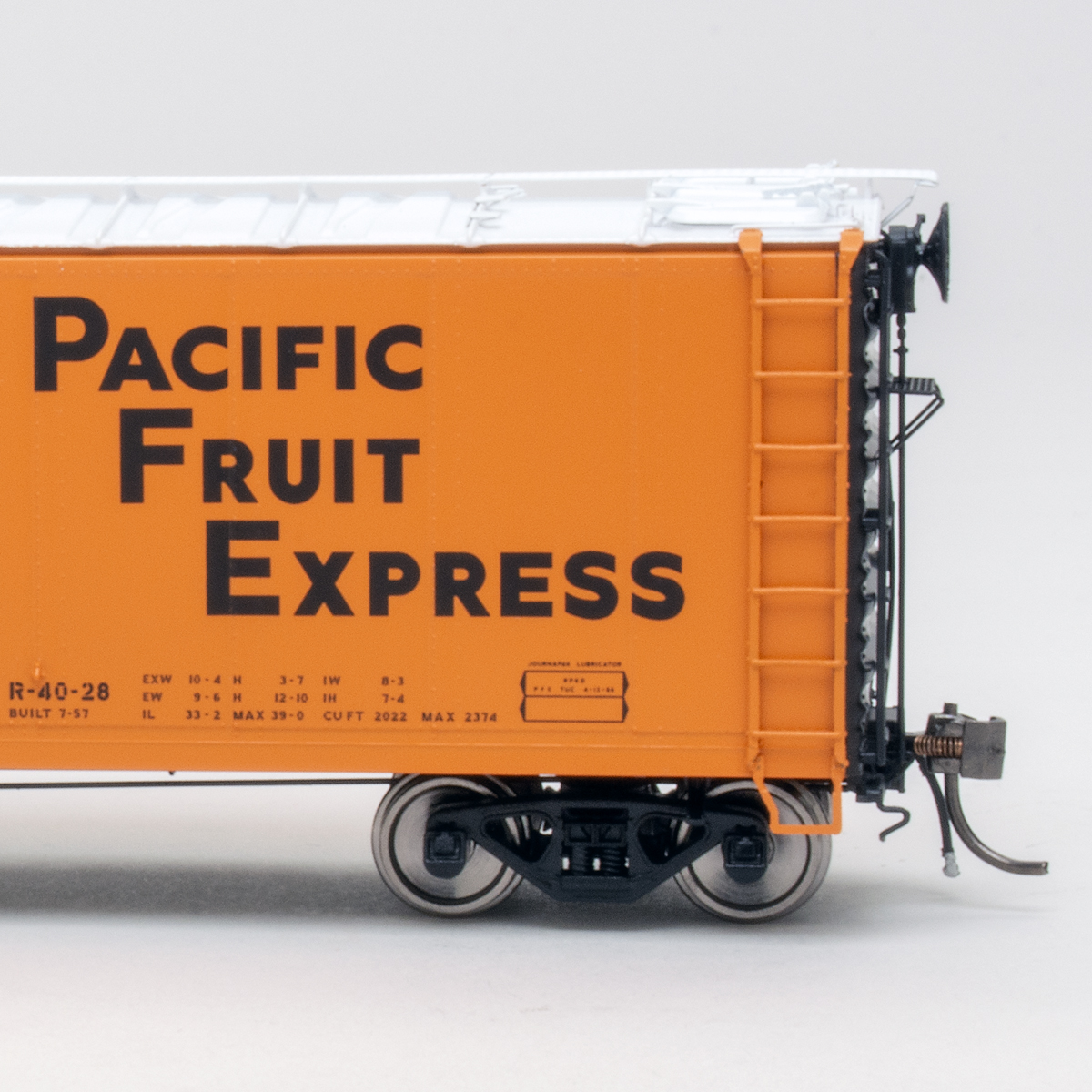The prototype. The 1965 High Speed Ground Transportation Act paved the way for state-of-the-art rail service for the North East Corridor (NEC) from Boston to Washington, D.C., that also ran through New York City, Philadelphia, and Baltimore. The Pennsylvania RR, Budd Co., General Electric, and Westinghouse developed an electric multiple unit (EMU) high-speed passenger train.
Budd built the streamlined car bodies with interiors reminiscent of modern jetliners. Developed independently about half of the EMUs received GE pantographs and traction motors, while the other half received Westinghouse equipment. Eventually 61 EMUs were built, including 31 coaches, 20 snack-bar coaches, and 10 parlor cars.
During a 1967 test run an EMU attained 156 mph, although the Federal Railway Administration eventually lowered its allowable top speed in the NEC to 125 mph. By 1968, a Penn Central herald had replaced the Pennsy keystone on the EMU cars. Service officially began in 1968 and was taken over by Amtrak in 1971.
The EMUs usually ran in four-, six-, or eight-car sets. By 1982 AEM-7 locomotives began replacing the EMUs in Metroliner Service. In 2006 as Amtrak expanded its Acela Express, Metroliner service was discontinued. Some of the Metroliner EMUs have been converted to cab cars on regional push-pull trains.
The plastic body shells feature sharp molded detail. The fluting matches prototype photos, as does the window placement for each car type.
All the handrails and other detail parts are factory installed. Both the snack-bar coach and parlor cars have antennas for the passenger telephones.
The model has a shiny simulated stainless-steel finish that looks like a freshly washed prototype EMU. The red, white, and blue stripes of the Amtrak phase I paint scheme are opaque, with sharp color separation.
The mechanism. The model includes an isometric drawing but no disassembly instructions. To begin disassembly I removed six screws on the model’s underframe. The two near the motor truck are difficult to reach, but they don’t need to be removed completely. Next, I used toothpicks to spread the sides of the body shell, so I could lift it off the frame.
The DCC decoder and printed-circuit board are attached to the car’s ceiling. Light-emitting diodes provide overhead interior lighting. Track power pickup, motor, and lighting leads all run up to the board, but these wires are barely visible when the shell is in place. A downward-facing oval speaker is mounted in the frame.
Except for the motor opening, the car interior matches prototype diagrams for each type. The interiors are all molded in one-piece tan plastic.
As on the prototype, the Walthers Metroliner doesn’t have a bell. (The only prototype EMUs that had bells were those that were later converted to cab cars.) Instead, function 1 triggers the traction motor blower sounds. Other sound effects include a long and short blast from the single-chime horn.
The model’s lighting effects are standout features, especially when operated in DCC. The headlights and marker lights automatically turn on and off according to direction. All the lighting effects are user-controlled, including the headlight dimmer for rule 17 lighting, Gyralight, and illuminated number boards.
The interior lights are activated by function 11. All the functions can be remapped to other keys, which is especially useful for those who operate the model using 8-function DCC throttles.
The model’s decoder also has its “train brake” feature pre-programmed to function 9. With a keypress, the Metroliner gradually comes to a stop with braking sounds. The rate of deceleration when using the train brake, as well as the model’s acceleration and deceleration momentum, can be adjusted with configuration variables. An extensive user’s guide is available as a free download at www.walthers.com. The link is under manuals on the site’s Resources page.I also easily programmed each EMU’s long address to its car number and
advance consisted the models for multiple unit operation.
DC performance. The dual-mode decoder ran reasonably well on our DC test track. Like most sound-equipped
locomotives, the EMU requires a lot of voltage. The sound and lights came on at 7 volts, and the model started moving at 8 volts. The model accelerated smoothly to a top speed of 99 scale mph at 12 volts. This speed is less than the prototype, but fast enough for most HO scale layouts.
The blower sounds are always on when the model is run on a DC layout. The horn signal for forward (two blasts) or reverse (three blasts) sounded automatically when I flipped the power pack direction switch.
On a DC layout, the headlight and marker lights operate according to the model’s direction. The Gyralight, illuminated number boards, and interior lighting are also activated.
With or without DCC, the Walthers Metroliner EMUs stand on their own as accurate, prototypically detailed models of a signature train of the 1970s.
Manufacturer
Wm. K. Walthers Inc.
P.O. Box 3039
Milwaukee, WI 53201
www.walthers.com
Era: 1968 to 1982 (1971 to 1982 as decorated)
Paint scheme: Amtrak Phase I
Car types (multiple road numbers each): coach, snack-bar coach, parlor car
Features
- 9-pin plug for DCC decoder (DC version only)
- All-wheel electrical pickup
- Detailed interior with overhead lighting
- Dual-mode SoundTraxx DCC sound decoder (DCC version only)
- Metal pantograph can be modified for overhead power pickup
- Metal wheels in gauge
- Minimum radius: 24″
- Operating light-emitting diode headlight, Gyralight, number boards and marker lights
- Power truck with helical geared, skew-wound motor
- Proto MAX metal knuckle couplers at correct height
- Weight: 12.4 ounces per car





